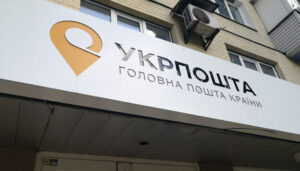
When choosing their future home, buyers prefer new-build properties in areas with well-developed infrastructure for shelter, modern fire safety systems, and autonomous energy sources, according to Irina Mikhaleva, CMO Alliance Novobud.
“Over the past three years, the criteria for choosing a home have changed. Buyers have become more practical, demanding in terms of quality, and adapted to the realities of war. They prefer homes in safe regions or areas with developed infrastructure for shelter, modern fire safety systems, and autonomous power sources,” Mikhaleva said.
Alliance Novobud is responding to changes in housing selection criteria by including spaces in its projects for temporary shelters with automatic door opening/closing and video surveillance.
“In our projects in the capital, we offer spacious and secure underground parking lots, provide access to autonomous energy sources for building utilities, and offer well-thought-out apartment layouts that meet the diverse needs of buyers,” said Mikhaleva.
Overall, she said, demand for housing in the capital has changed significantly since 2022. Whereas previously buyers were looking for interesting new projects in the comfort and comfort+ classes, with a wide choice of concepts and areas, they are now focused on affordable options that are nearing completion. The focus is on apartments that are covered by the “єОселя” program or are available on installment plans from the developer.
In contrast, the suburban market remains active: developers are launching new high-quality projects with a wide selection of housing with different concepts and amenities at affordable prices.
According to Mikhalova, several factors are influencing the outflow of buyers from the capital’s market to the suburbs. The main factor is the shortage of finished or nearly finished housing in the currently popular comfort class in the capital, which will only get worse. There are almost no new projects, nor are there any land plots in promising areas of the city. Buyers are also more interested in the more affordable cost of housing in the suburbs and the opportunity to take advantage of the “єОселя” program.
At the same time, suburban projects offer more high-quality options close to green areas, with transport and amenities. There is greater demand for such projects from IDPs from the eastern and southern regions, who prefer quiet, green suburbs.
“In the next year or two, demand in the suburbs will grow steadily, and buyers will be interested in affordable and relatively inexpensive housing formats,” Mikhaleva believes.
Among the trends, the expert also highlighted a rational approach, with buyers opting for smaller square footage. As a result, demand for one- and two-bedroom apartments, which are more affordable and easier to maintain, has increased. At the same time, living spaces that can be used for both residential and remote work remain relevant.
At the same time, she emphasized that the trend of rising prices per square meter will continue due to the growth of prices for the components of the cost of new buildings.
“If the macroeconomic situation remains more or less stable, prices are likely to rise by 5-10% due to inflation and the gradual recovery of the construction industry. Demand from migrants and a shortage of new housing will also drive up prices. In the event of external/internal shocks or instability in the financial markets, current prices may remain unchanged,” she said.
According to the LUN new construction portal, Alliance Novobud was founded in 2006. Since 2010, the company has commissioned 37 buildings and parking lots, and is currently developing nine buildings in the Krona Park II residential complex in Brovary and a premium-class project in the capital, Montreal House.

Primary nickel production in the world will increase by 5.9% to 3.735 million tons in 2025, according to the International Nickel Study Group (INSG).
In 2024, it increased by 11.1% to 3.526 million tons.
These estimates do not take into account the possibility of any disruptions in the operation of enterprises, INSG said in a statement.
Indonesia is expected to continue to increase production of various types of nickel products, including nickel pig iron (NPI). In China, nickel production is forecast to grow this year due to higher output of cathode nickel and nickel sulfate, while NPI production is expected to decline further.
In other countries, mainly due to problems with profitability, a number of production facilities have been mothballed, reduced output or are considering one of these options in the future, INSG said.
Growth in the use of nickel in batteries for electric vehicles was weaker than expected, in particular due to competition from other types of batteries (mainly lithium-iron-phosphate), the organization’s analysts say.
Global consumption of primary nickel is expected to increase by 5.7% this year to reach 3.537 million tons. Last year, it increased by 4.8% to 3.347 million tons.
Thus, the global nickel market will remain in surplus. The surplus of the metal in 2023 amounted to 170 thousand tons, in 2024 – 179 thousand tons, and by the end of 2025, production will exceed demand by 198 thousand tons, according to INSG.
INSG is an independent intergovernmental organization founded in 1990 and based in Lisbon, Portugal. The members of the group are nickel producing and consuming countries: Australia, Brazil, Cuba, France, Germany, Finland, France, Germany, Italy, Japan, Norway, Portugal, Russia, Sweden, Sweden, the United Kingdom, and the European Union.

The Verkhovna Rada Committee on Finance, Tax and Customs Policy has announced a competition for a vacant position on the Council of the National Bank of Ukraine (NBU), setting the deadline for applications as May 22, 2025.
“We had a meeting with the IMF, and they expressed their position on the need to fill the vacant position,” said committee head Danylo Getmantsev during the meeting.
He said that the deadline for accepting applications from candidates for the position of member of the National Bank Council is one month, until 4 p.m. on May 22, 2025.
“We will listen, conduct a selection process, as we always do – openly and transparently,” Getmantsev added.
As reported, in the memorandum of the extended financing program with the IMF, updated after the seventh review, the Ukrainian side noted that it plans to fill the vacant positions in the NBU Council by the end of April 2025.
In addition to the head of the NBU, the National Bank Council has eight other members: four are appointed by the president and four by the Verkhovna Rada for a term of seven years. Currently, Igor Veremiy and Vasily Furman have been appointed under the president’s quota (in June and November 2022), and Vasily Gorbali, Anatoly Barsukov, and Elena Shcherbakova have been appointed under the Verkhovna Rada’s quota (in September 2020 and December 2022).
COMPETITION, member of the NBU Council, VACANCY, Verkhovna Rada Committee

– The open solution provides fast installation and optimizes reimbursement processes to support fleet electrification.
– Minimizes power outages to accelerate the development of charging infrastructure in multi-family buildings and private homes.
– Remote monitoring through one easy-to-use mobile application.
Schneider Electric, a leader in digital transformation in energy management and automation, has launched Schneider Charge Pro, a reliable, energy-efficient electric vehicle (EV) charging solution in Europe to accelerate the adoption of electric vehicles among commercial fleet and apartment building owners. In line with the EU’s Energy Performance of Buildings Directive (EPBD), which requires the modernization of EV chargers by 2027, Schneider Charge Pro aims to address key barriers to growth in a complex and fragmented market landscape as a comprehensive, affordable solution for electric mobility.
More than just a charging station, Schneider Charge Pro is part of a fully integrated turnkey solution that simplifies the charging process from start to finish, making it easy for charging point operators (CPOs) and building owners to upgrade or install new EV charging stations, and easy and smooth for electricians to install. The solution also comes with open system software that efficiently tracks charging times, simplifying the process of reimbursing CPOs for employees who charge EVs that are part of a residential complex’s fleet.
This open solution is complemented by two new products designed to provide fast and reliable access to electric vehicle charging for cars, vans and other electric vehicles. The EVCE MFH solution, designed specifically for multifamily buildings, manages electricity loads in real time, allowing large numbers of EVs to be charged without overloading or disrupting power supply to tenants or the building. This is supported by a new cloud-based remote monitoring tool that allows for off-site pre-commissioning and faster on-site commissioning through a single, intuitive mobile app.

“As the market and regulatory environment rapidly evolves, Schneider Electric continues to lead the way in the new energy era,” said Nadezh Petit, Chief Innovation Officer at Schneider Electric. “Schneider Charge Pro builds on our century-long legacy of energy management innovation by offering an open, affordable and efficient EV charging solution designed to enable companies to easily electrify their fleets. By simplifying the adoption of electric vehicles for fleet operators, building owners, electricians and apartment buildings, we ensure compliance with EU regulations while helping companies accelerate their electrification goals, move forward and make the transition to sustainable energy.”
The Schneider Charge Pro electric vehicle charging solution is now available in France, Ukraine, and Hong Kong, with more countries to follow within a year.
To obtain the brochure, please follow this link.
***
About Schneider Electric
Schneider’s purpose is to create impact by empowering everyone to make the most of our energy and resources, ensuring progress and sustainability for all. We call it Life Is On.
Our mission is to be a trusted partner in sustainability and efficiency.
We are a global technology leader, bringing world-class expertise in electrification, automation and digitalization to smart industries, reliable infrastructure, future-proof data centers, smart buildings and intuitive homes. Drawing on our deep industry expertise, we provide integrated end-to-end AI-enabled industrial IoT solutions with connected products, automation, software and services, creating digital twins to drive profitable growth for our customers.
Ourmain resource is our 150,000 employees and more than a million partners operating in more than 100 countries to ensure proximity to our customers and stakeholders. We support diversity and inclusion in everything we do, guided by our meaningful purpose of a sustainable future for all.

Ukrposhta JSC increased its revenue by 12.1% in 2024 compared to 2023 to UAH 12.9 billion and reduced its loss by 1.9 times to UAH 413.2 million, the company’s press service reported, citing the company’s financial statements confirmed by an independent international auditor.
“Despite the difficult wartime conditions, the national postal operator continues to increase revenue and demonstrates positive financial results in 2024. According to the company’s financial statements, confirmed by an independent international auditor, in 2024 Ukrposhta received UAH 12.9 billion in revenue, which is UAH 1.3 billion, or 12.1%, more than in 2023,” Ukrposhta’s press service said on Monday.
The growth of the company’s financial performance at the level of 12% has been recorded for the second year in a row: in 2023, the company’s revenue also increased by 12% compared to 2022 and amounted to UAH 11.6 billion, the Ukrposhta press service emphasized.
In 2024, for the first time since the beginning of the full-scale invasion, Ukrposhta received positive EBITDA (earnings before interest, taxes, depreciation, and amortization). The figure reached UAH 659.3 million. In 2023, Ukrposhta had an excellent EBITDA (-22.9 million UAH), and in 2022 (-462.8 million UAH), the company said in a statement.
“Despite the stable dynamics of revenue growth, Ukrposhta still has a net loss. However, it has almost halved – by UAH 383.2 million compared to 2023 – and now amounts to UAH 413.2 million. The main factors behind the loss were currency fluctuations (UAH 246.9 million) and the cost of maintaining property whose sale was legally blocked (UAH 43.2 million),” Ukrposhta’s press service said.
Capital investments in 2024 amounted to UAH 695.7 million.
It is noted that the key drivers of the company’s growth in 2024 were income from international postal exchange – +45%; payment acceptance – +28.3%; expedited international EMS delivery – +26.6%; international shipments (small packages) – +25.5%; parcels – +10.8%.
“On paper, Ukrposhta is still unprofitable, but an international audit has already confirmed that our EBITDA is positive. That is, the company is actually in the black operationally, and the losses we record are servicing loan obligations in foreign currency, which grow in proportion to the depreciation of the national currency, and lost income from the planned sale of property. Part of the losses is the constant destruction of our infrastructure (branches, vehicles), given that Ukrposhta operates along the entire front line, where there are no other companies,” Ukrposhta CEO Ihor Smelyansky said, as quoted by the press service.
Smelyansky assured that Ukrposhta will continue reforms and investments in new facilities.
Ukrposhta emphasized that the company currently has no arrears in payments to budgets and state trust funds. In total, in 2024, the company paid UAH 3.1 billion in taxes, fees and mandatory payments, which is UAH 124.0 million more than in 2023.
Earlier it was reported that in the fourth quarter of 2024, Ukrposhta JSC increased its net income by 11.5% compared to last year to UAH 3.59 billion, having received a net profit of UAH 97.7 million for the first time since the beginning of the full-scale invasion.

Finland’s Peikko Group Corporation has announced the commissioning of an industrial building for a future plant for the production of concrete joints and composite structures in Bila Tserkva Industrial Park, with planned investments of EUR3 million, according to Dmytro Kysylevskyi, deputy chairman of the parliamentary committee on economic development.
“The import of equipment will continue through May, after which the plant will start producing products for the needs of the construction industry,” he wrote on his Facebook page.
The MP clarified that Peikko Group will take advantage of tax and customs incentives for participants in the IP. In particular, the legislation provides for the possibility of exemption from VAT and import duties on equipment imports. The company will create about 50 jobs.
Peikko Group has production facilities in 12 countries. Since 2023, the company has been represented in Ukraine by its subsidiary Peikko Ukraine, which participates in infrastructure rehabilitation projects. Peikko’s annual turnover in 2023 amounted to EUR262 million.
As reported, last summer Peikko Group entered into an agreement with Bila Tserkva for the construction of a turnkey plant for the production of concrete joints and composite structures with an area of 2400 square meters. Bila Tserkva and Bila Tserkva-2, with an area of over 24 hectares and over 34 hectares, respectively, are projects of the UFuture holding company owned by entrepreneur Vasyl Khmelnytsky.